
Winter Birding
January 2024
By Justin Taus
For many, winter is a time to shelter indoors under a blanket reading a good book or watching television. For outdoor enthusiasts willing to brave the cold and snow however, winter is a great time to be out birdwatching. With deciduous trees devoid of leaves and certain sources of food not as readily available, it’s a season that makes it easier to find and observe birds, including less-common migratory species that you won’t see at any other time of year. This blog will highlight some of these species and where to look for them in your area. Always remember to birdwatch ethically; if the birds are fleeing or agitated by your presence, you’re probably too close!
Snow Buntings
These small hyperactive songbirds breed in the high arctic and migrate south during the winter, where they gather in large flocks. They can be seen actively foraging for insects, seeds and vegetation on the ground, often hopping over each other and running around. Look for them in open fields in crop stubble, on shorelines and along roads.
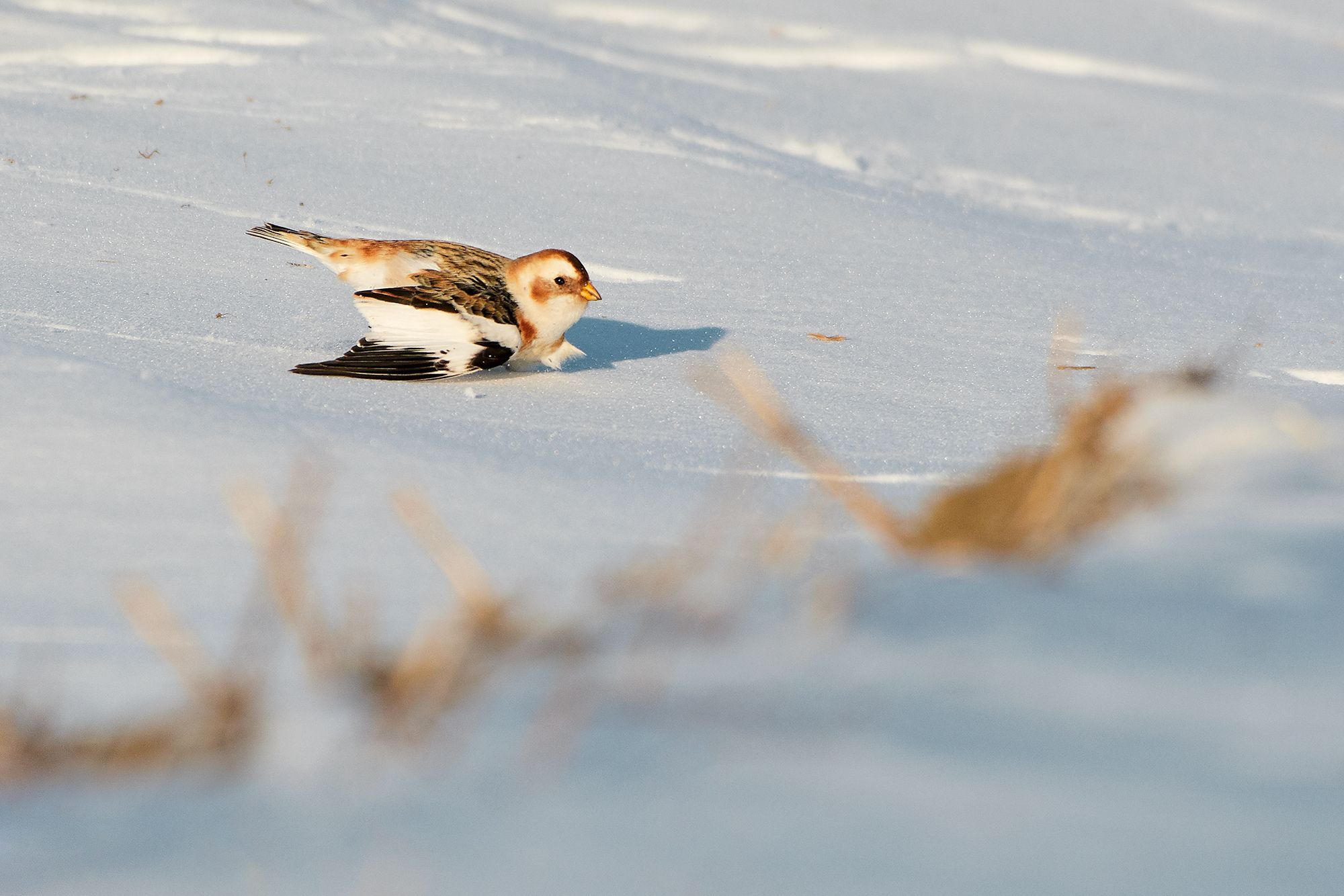
Northern Shrikes
Northern Shrikes breed in the northern reaches of North America and head south in the winter. These charismatic-looking birds are carnivorous and use their hooked bills to catch and eat other birds, small mammals and insects. They are known for hunting more than they can eat and storing their prey on thorns and branches to be consumed at a later time. Look for these impressive predators in open brushy habitats, like agricultural fields and forest edges around wetlands.

Northern Shrike
Red-breasted Nuthatches
It is possible to encounter the Red-breasted Nuthatch year-round, although it is sometimes more likely to spot them in winter, especially during irruption years. Not all Red-breasted Nuthatches migrate, but those living in the northernmost portions of their range will move south in years when winter food crops fail in the north. Look closely for small birds moving up, down, sideways and even upside-down along trunks and branches. They are often seen with chickadees, woodpeckers and kinglets and are commonly observed at bird feeders.
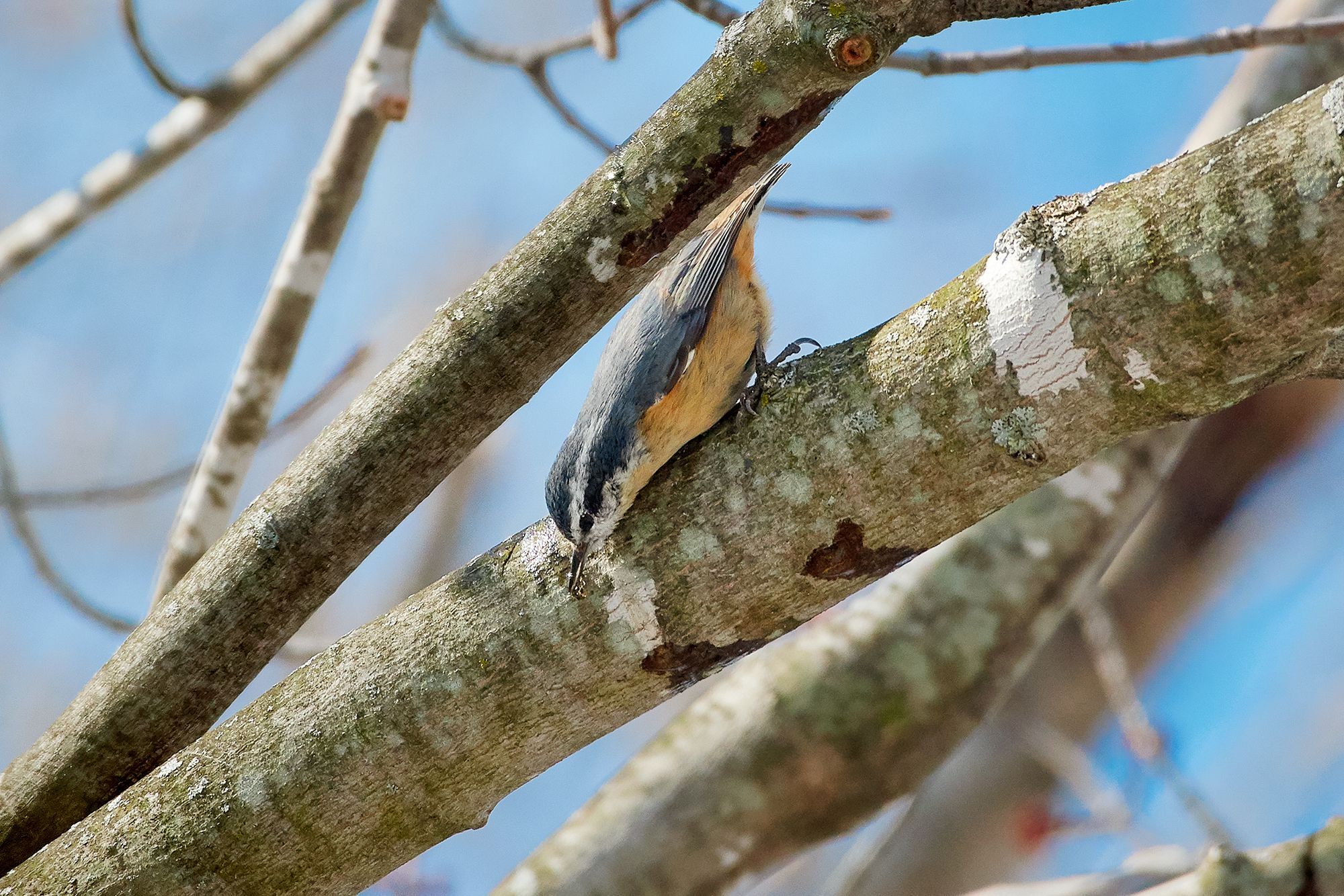
Pine Grosbeaks
Pine Grosbeaks are a relatively large, brightly-coloured species of finch. Males are pinkish-red and females are yellowish-orange. In the winter they are often seen in evergreen forests, where they use their stout bills to crush and eat seeds. They are also often seen at bird feeders, especially when sunflower seeds are offered.
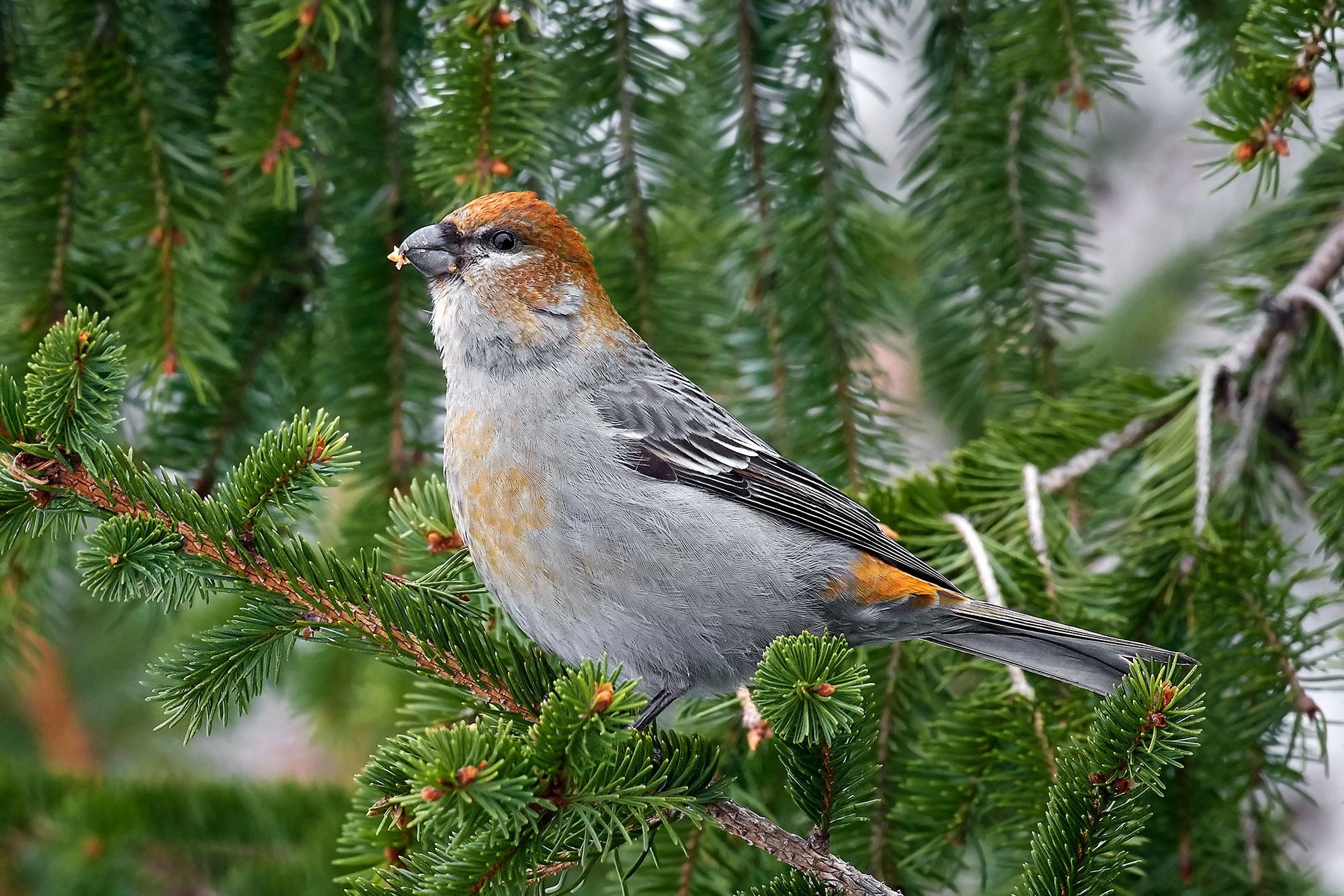
White-winged Crossbills
White-winged Crossbills are aptly named for their twisted bills that allow them to access seeds inside cones. Males are pinkish-red whereas females are yellowish-green. Look for these birds in coniferous forests, especially near spruce and tamarack trees, where they can be found actively foraging in flocks. These birds will hang upside-down and compete with one another to reach cones. They also sometimes visit bird feeders.
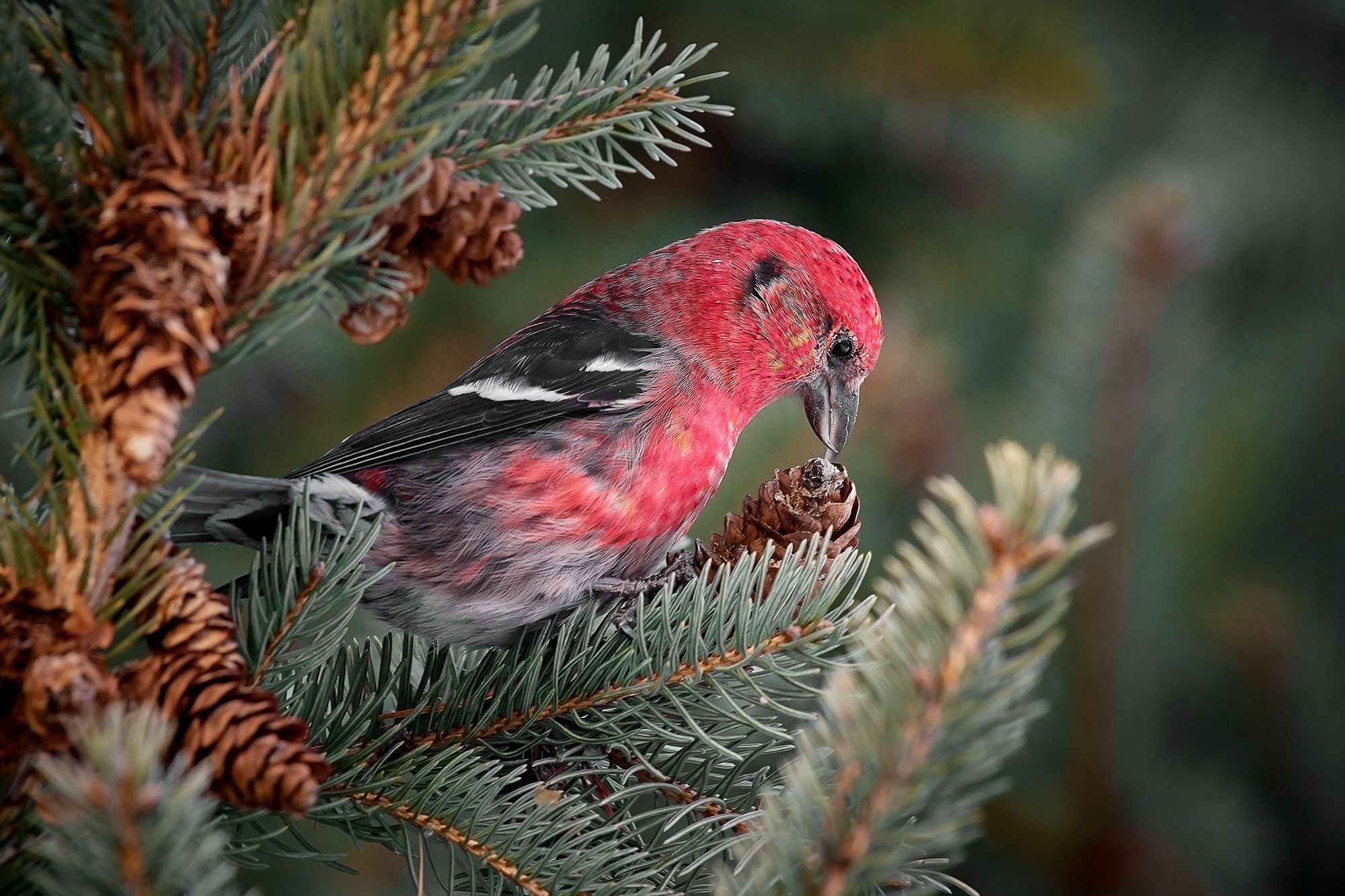
Common Redpoll
The Common Redpoll is a small finch species that breeds in the arctic tundra and northern Boreal forest. Not unlike other migratory species, it is more likely to encounter them during irruption years when food crops are insufficient in the north. They forage in noisy, rapidly-moving flocks and are most likely to be found eating catkins in birch trees. During irruption years, it isn’t uncommon to find them at bird feeders.

Golden-crowned Kinglet
Not unlike the Red-Breasted Nuthatch, the Golden-Crowned Kinglet can be seen year round, but winter offers a good opportunity to spot them because northernmost populations do migrate south. These tiny, almost hummingbird-sized birds can tolerate cold temperatures by sheltering in dense foliage and sometimes huddling together for warmth. To find this bird look closely for rapid movements high-up in coniferous trees, especially spruce and fir.

Year-round species
Although this blog focused on a few of the less-commonly seen species, winter is also a great time to observe the amazing birds that we can see year-round in southern Quebec. These include the Northern Cardinal, Black-capped Chickadee, Blue Jay, American Goldfinch, the White-Breasted Nuthatch, Dark-eyed Junco, various woodpeckers, owls and birds of prey. You’d be surprised by all that you can see by simply taking a walk through an urban park or sitting patiently near a bird feeder! It’s time to grab you binoculars, dress warmly, lace up your winter boots and head outdoors!
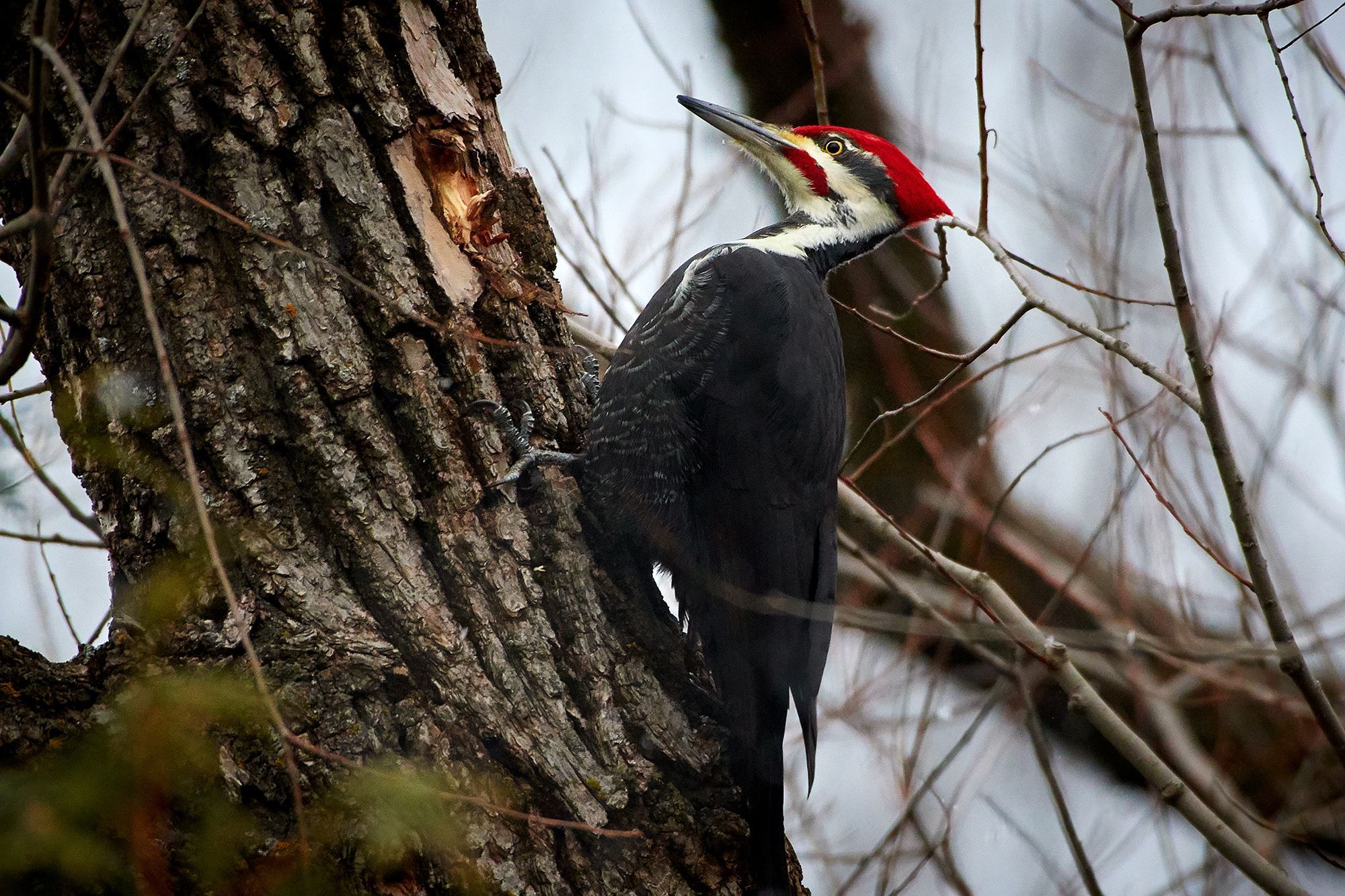

Justin Taus
Justin Taus is on the Caregiver team at Fauna Foundation. Justin holds degrees in both Education and Journalism from Concordia University in Montreal, Canada, where he specialized in photojournalism. He has reported from diverse regions of the world including the Amazon rainforest, the savannahs of Eastern Africa and the Alaskan Arctic. He has produced content for organizations like the Wildlife Conservation Society and the International League of Conservation Photographers as well as media outlets including Outdoor Photographer magazine, Vice and the CBC. Justin has been photographing the wildlife at Fauna since 2017.




